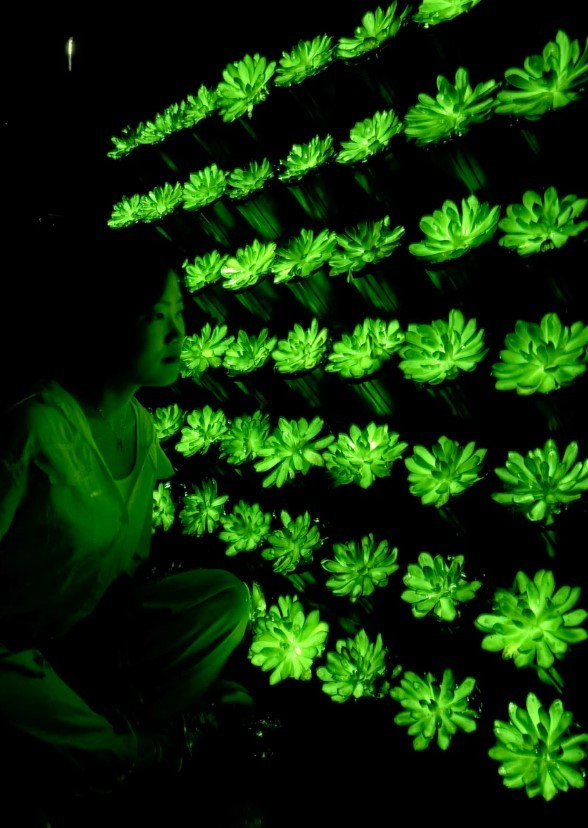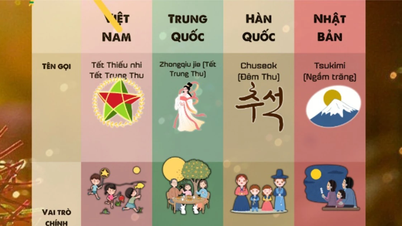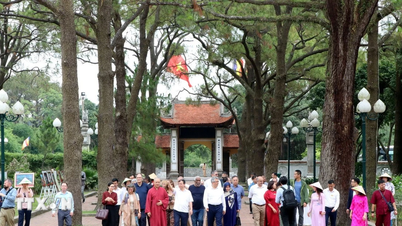Plants that emit enough light to see clearly on a dark road may seem like something out of science fiction or mythology. But in fact, American scientists have created a plant that emits a faint green light. This plant has even been commercialized.
Recently, a group of Chinese researchers went further when they announced that they had created plants with the ability to emit multi-color light, with the greatest light intensity ever.
“Imagine a world like in the movie Avatar, where glowing trees illuminate the entire ecosystem,” said biologist Shuting Liu, a lecturer at South China Agricultural University in Guangzhou and co-author of the study published Aug. 27 in the journal Matter. “We want to make this vision a reality using materials that are already readily available in the lab. Imagine a day when glowing trees could replace streetlights.”
To create the glowing plant, Liu and his colleagues injected nanoparticles of strontium aluminate into the stems of Echeveria mebina. Strontium aluminate is a material commonly used in glowing toys. It has the property of absorbing light and then gradually emitting light.
The method of the Chinese scientists is completely different from the gene editing technique pioneered by a research group at the Massachusetts Institute of Technology (MIT - USA).
By injecting nanoparticles into the plants rather than genetically modifying them, the team was able to create plants that glow in a variety of colors, including red, blue and green. In previous experiments, the light emitted by the plants was only green, due to the natural properties of plants.
“Gene editing is an interesting approach,” Liu told CNN, “but we were inspired by some inorganic materials that are ‘charged’ with light and then gradually glow. There have also been previous attempts to engineer glowing plants, which have led to the concept of lighting with plants, even streetlights made from plants. So our goal is to integrate multi-color luminous materials into plants to store light for a long time. This also overcomes the color limitation and provides a way to store and emit light independently of photosynthesis.”
The team demonstrated the potential of their new research by building a wall made of 56 succulent plants. The light they emitted was strong enough to allow people to clearly see letters, images, and even the bodies of people standing about 10cm away from the plants.
After being injected with strontium aluminate and placed in sunlight for a few minutes, the plant can glow for up to two hours. Although the light fades over time, the plant can still be recharged many times through exposure to sunlight. Liu said the effect of the strontium aluminate injection is very long-lasting. Twenty-five days after the injection, the succulent leaves still glowed when stimulated with ultraviolet light, even after they had withered.

To overcome the risk of strontium aluminate decomposing and harming plants, the team developed a chemical coating that encases the material. In another study published in the journal Nature Biotechnology, the scientists also showed that inserting genetic data from bioluminescent fungi into plants will make them glow very brightly, thereby suggesting the potential for creating a “sustainable and efficient lighting system”.
Not everyone is optimistic about the prospect of using trees for lighting, however. “I like the research. It’s interesting. But I think it’s a bit beyond our current capabilities, and probably too much for trees,” said Professor John Carr, an expert in plant science at the University of Cambridge, UK. “Also, given that trees only emit a limited amount of energy, I don’t think they’ll replace streetlights in the near future.”
Liu himself admitted that the glowing plants created by the group are “still far from achieving real lighting capabilities” because the luminescence intensity is too weak to be used in practical applications. In addition, the group is also continuing to evaluate the safety of the glowing particles when it comes into contact with green plants, as well as with animals.
For now, she thinks the newly created glowing tree is only suitable as a decoration or artistic night light. But Liu still hopes to increase the level of light in the future, as well as address safety concerns, to create beautiful self-illuminating gardens at night.
In nature, science has yet to find any higher green plants that can glow like the ones described in the movie Avatar. The phenomenon of “glowing trees” that people sometimes see in the forest, or on rotten wood, often originates from other organisms living symbiotically or parasitically on them. The most prominent are the group of luminescent fungi and some luminescent bacteria, which will create a dim light that makes many people mistakenly think that the tree is a light source.
In the mushroom world, scientists have recorded more than 80 species of mushrooms that have the ability to naturally glow. These species are widely distributed in many humid forest areas around the world , especially in the tropics.
The light they emit is often a soft green, visible enough to be seen in the dark. A prime example is the mushroom Armillaria mellea, also known as the honey mushroom. Its mycelium can penetrate tree roots or rotting wood and glow, making the entire tree appear to glow in the dark.
In Japan and some parts of Asia, the Mycena chlorophos species is famous for its small fruiting bodies that emit a beautiful green light. Meanwhile, the Panellus stipticus mushroom that grows on rotten wood in North America and Europe is also a species with quite strong luminescence. The luminescence mechanism of these mushrooms is similar to that of fireflies, based on a chemical reaction between the enzyme luciferase and the substance luciferin in the body./.
Source: https://www.vietnamplus.vn/lan-dau-che-tao-thanh-cong-cay-tu-phat-sang-da-sac-trong-bong-toi-post1059868.vnp






![[Photo] Super harvest moon shines brightly on Mid-Autumn Festival night around the world](https://vphoto.vietnam.vn/thumb/1200x675/vietnam/resource/IMAGE/2025/10/07/1759816565798_1759814567021-jpg.webp)
































































































Comment (0)